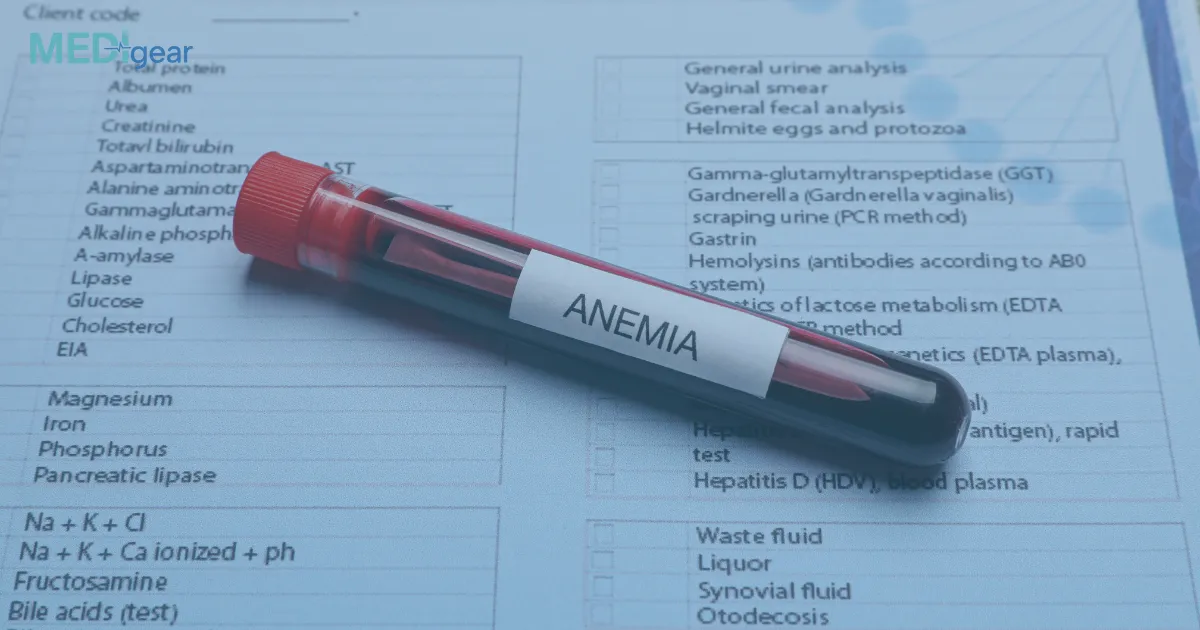Introduction
Anemia—a condition marked by insufficient healthy red blood cells or hemoglobin—affects billions globally. It's more than just feeling tired; it disrupts oxygen delivery to vital organs and tissues, compromising physical and mental well-being.
1. Why Energy Tanks: Understanding Fatigue
Hemoglobin, the oxygen-carrying protein in red blood cells, is essential for energy. Without enough of it, your muscles and brain don’t receive adequate oxygen, leading to fatigue—even after rest.
Key symptoms include:
- Persistent tiredness and weakness
- Dizziness, lightheadedness, and headaches
- Shortness of breath, even during mild activity
- Cold hands and feet due to poor circulation
2. Body Under Stress: Beyond Fatigue
Anemia doesn’t just cause tiredness—it strains the body’s entire system:
- The heart works harder, often causing palpitations or irregular heartbeat.
- Pale or sallow skin appears as blood is redirected to vital organs.
- Headaches and dizziness intensify due to reduced oxygen in the brain.
- Weakened immunity increases vulnerability to infections.
3. Cognitive & Developmental Impact
In children and adolescents, anemia can hinder growth, learning, and brain development. In adults, it impairs concentration, memory, and productivity—impacting quality of life and work performance.
4. Anemia in Women and Pregnancy
Pregnant individuals face higher risks—anemia can lead to preterm birth, low birth weight, and even maternal complications. For working women, chronic fatigue, frequent illness, and reduced focus are common struggles.
5. Types of Anemia & Their Effects
- Iron-Deficiency Anemia: The most common type, caused by poor diet, blood loss, or absorption issues. Symptoms include fatigue, brittle nails, and cravings for non-food items.
- Vitamin B12 (Pernicious) Deficiency: Affects nerve function, leading to numbness, mood changes, memory loss, and even irreversible neurological damage if untreated.
6. Managing Anemia: Steps Toward Recovery
Diagnostics
- Complete Blood Count (CBC) to assess hemoglobin and red cell counts.
- Additional tests for iron levels, ferritin, and vitamin B12.
Treatment & Lifestyle
- Diet: Eat iron-rich foods (red meat, lentils, leafy greens) with vitamin C for absorption. Limit tea, coffee, and calcium at meals.
- Supplements: Iron, folic acid, or B12 as prescribed.
- Treat underlying causes: Heavy menstrual bleeding, chronic illnesses, or poor nutrition.
- Exercise & hydration: Gentle physical activity and proper hydration improve oxygen delivery and energy.
- Monitoring: Regular blood tests to track progress.
7. Real-Life Implications
Anemia affects far more than health—it reduces workplace productivity, impacts school performance, and creates long-term developmental issues in children. Tackling anemia is crucial for personal well-being and public health.
Conclusion
Anemia isn’t simply low iron or red blood count—it drains energy, disrupts organ function, and impairs mental clarity. If you experience persistent fatigue, dizziness, or shortness of breath, consult a healthcare provider. Early diagnosis and proper treatment can restore vitality and protect long-term health.
Disclaimer
This article is for informational purposes only and should not replace medical advice. Always consult a qualified healthcare provider for diagnosis or treatment of anemia.
References






